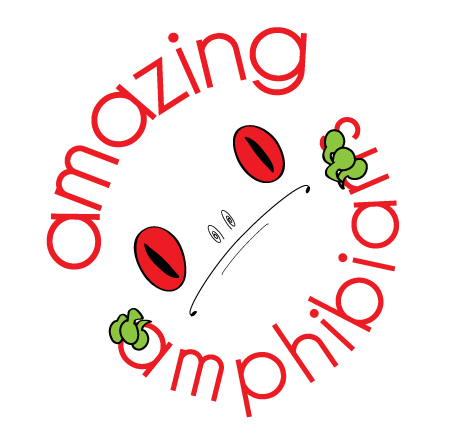|
Pseudophryne corroboree Moore, 1953
Corroboree frog | family: Myobatrachidae subfamily: Limnodynastinae genus: Pseudophryne |
 © 2022 Tiffany Kosch (1 of 3) |
|
|
|
Description The calls of P. corroboree, are very similar to P. bibroni and P. dendyi, although in general the pulse number is shorter and the call duration is longer (Pengilley 1971). The call is best characterized as an upward inflected 'ark' (Barker et al. 1995). Distribution and Habitat Country distribution from AmphibiaWeb's database: Australia
Life History, Abundance, Activity, and Special Behaviors The Corroboree frog is a sit and wait predator which feeds primarily in leaf litter and around fallen logs. Their prey is predominately small and slow moving items, consisting mainly of ants and termites. There is extensive food niche overlap between P. corroboree, P. dendyi, and P. bibroni (Pengilley 1971). Trends and Threats Although the conservation status of the Corroboree frog is relatively secure because of its location in the Kosciusko National Park, the population size and trends demonstrate its fragile status. This is especially evident in the southern population, which was restricted to only ten breeding sites and steadily declining during the four-year study conducted by Osborne (1989). Even though separated from the northern population by only 10 km, inter-population dispersal seems unlikely due to the unsuitable breeding environment between them (Osborne 1989). Furthermore, the southern form seems at risk because of its low levels of heterozygosity (Osborne and Norman 1991). Comments
References
Barker, J., Grigg, G. C., and Tyler, M. J. (1995). A Field Guide to Australian Frogs. Surrey Beatty and Sons, New South Wales. Cogger, H. G. (1996). Reptiles and Amphibians of Australia. Reed Books Australia, Port Melbourne. Osborne, W. S. (1989). ''Distribution, relative abundance and conservation status of Corroboree Frogs, Pseudophryne corroboree Moore (Anura: Myobatrachidae).'' Australian Wildlife Research, 16, 537-547. Osborne, W. S., Zentelis, R. A., and Lau, M. (1996). ''Geographical variation in Corroboree Frogs, Pseudophryne corroboree Moore (Anura: Myobatrachidae): A reappraisal supports recognition of P. pengilleyi Wells and Wellington.'' Australian Journal of Zoology, 44, 569-587. Osborne, W. S., and Norman, J. A. (1991). ''Conservation genetics of Corroboree Frogs, Pseudophryne corroboree Moore (Anura: Myobatrachidae): Population subdivision and genetic divergence.'' Australian Journal of Zoology, 39, 285-297. Pengilley, R. (1973). ''Breeding biology of some species of Pseudophryne (Anura: Leptodactylidae) of the Southern Highlands, New South Wales.'' Australian Zoologist, 18(1), 15-30. Pengilley, R. K. (1971). ''Calling and associated behaviour of some species of Pseudophryne (Anura: Leptodactylidae).'' Journal of Zoology, London, 163, 73-92. Pengilley, R. K. (1971). ''The food of some Australian anurans (Amphibia).'' Journal of Zoology, London, 163, 93-103. Originally submitted by: Jean-Marc Hero et. al. (first posted 1999-09-02) Edited by: Sean Schoville, Meredith J. Mahoney, J.-M. Hero, Ann T. Chang (2013-09-23) Species Account Citation: AmphibiaWeb 2013 Pseudophryne corroboree: Corroboree frog <https://amphibiaweb.org/species/3585> University of California, Berkeley, CA, USA. Accessed Jun 14, 2025.
Feedback or comments about this page.
Citation: AmphibiaWeb. 2025. <https://amphibiaweb.org> University of California, Berkeley, CA, USA. Accessed 14 Jun 2025. AmphibiaWeb's policy on data use. |



 Map of Life
Map of Life Featured in Amazing Amphibians on 23 September 2013
Featured in Amazing Amphibians on 23 September 2013